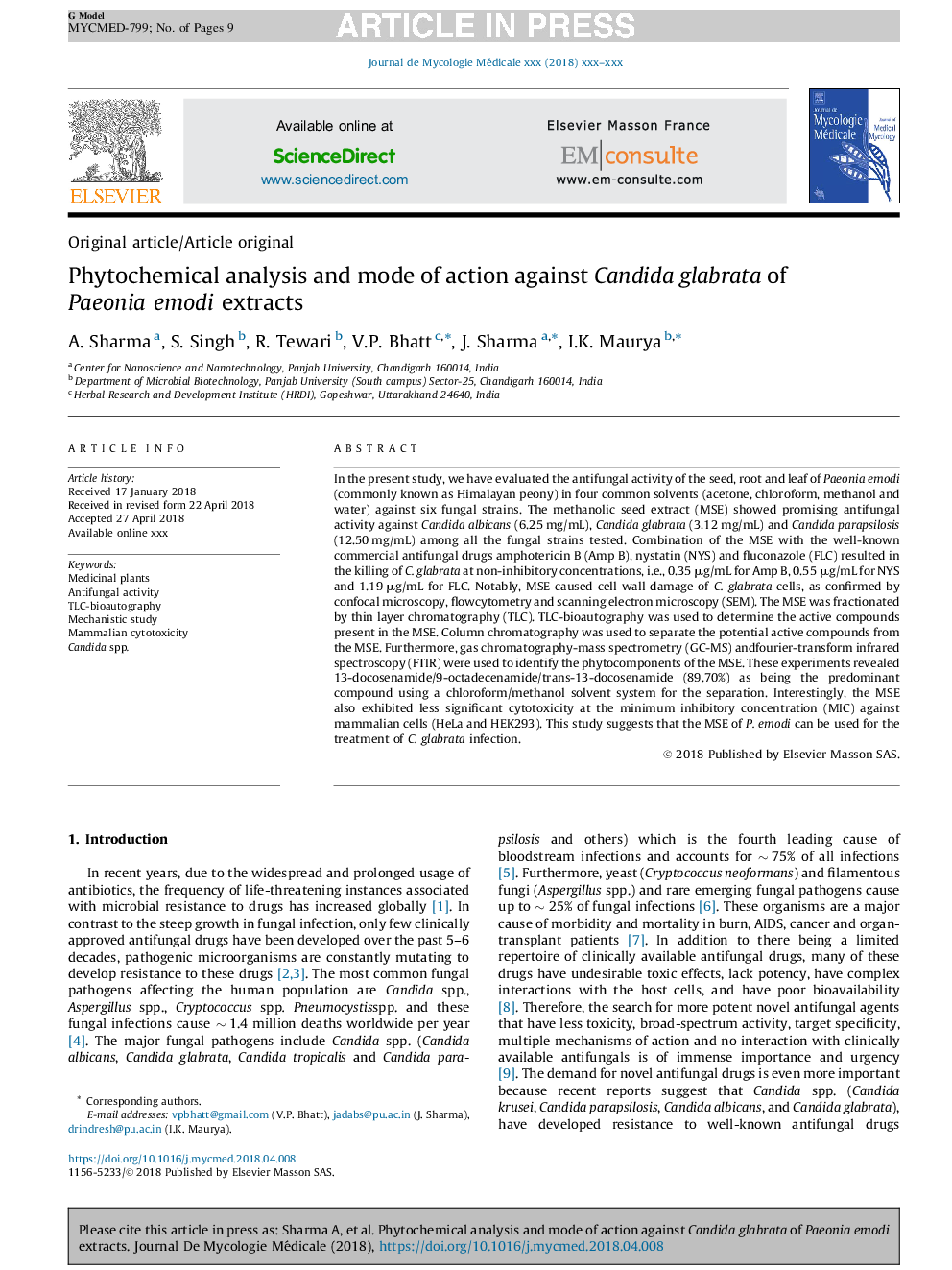| کد مقاله | کد نشریه | سال انتشار | مقاله انگلیسی | نسخه تمام متن |
|---|---|---|---|---|
| 8963812 | 1646631 | 2018 | 9 صفحه PDF | دانلود رایگان |
عنوان انگلیسی مقاله ISI
Phytochemical analysis and mode of action against Candida glabrata of Paeonia emodi extracts
دانلود مقاله + سفارش ترجمه
دانلود مقاله ISI انگلیسی
رایگان برای ایرانیان
کلمات کلیدی
موضوعات مرتبط
علوم زیستی و بیوفناوری
ایمنی شناسی و میکروب شناسی
انگل شناسی
پیش نمایش صفحه اول مقاله

چکیده انگلیسی
In the present study, we have evaluated the antifungal activity of the seed, root and leaf of Paeonia emodi (commonly known as Himalayan peony) in four common solvents (acetone, chloroform, methanol and water) against six fungal strains. The methanolic seed extract (MSE) showed promising antifungal activity against Candida albicans (6.25 mg/mL), Candida glabrata (3.12 mg/mL) and Candida parapsilosis (12.50 mg/mL) among all the fungal strains tested. Combination of the MSE with the well-known commercial antifungal drugs amphotericin B (Amp B), nystatin (NYS) and fluconazole (FLC) resulted in the killing of C. glabrata at non-inhibitory concentrations, i.e., 0.35 μg/mL for Amp B, 0.55 μg/mL for NYS and 1.19 μg/mL for FLC. Notably, MSE caused cell wall damage of C. glabrata cells, as confirmed by confocal microscopy, flowcytometry and scanning electron microscopy (SEM). The MSE was fractionated by thin layer chromatography (TLC). TLC-bioautography was used to determine the active compounds present in the MSE. Column chromatography was used to separate the potential active compounds from the MSE. Furthermore, gas chromatography-mass spectrometry (GC-MS) andfourier-transform infrared spectroscopy (FTIR) were used to identify the phytocomponents of the MSE. These experiments revealed 13-docosenamide/9-octadecenamide/trans-13-docosenamide (89.70%) as being the predominant compound using a chloroform/methanol solvent system for the separation. Interestingly, the MSE also exhibited less significant cytotoxicity at the minimum inhibitory concentration (MIC) against mammalian cells (HeLa and HEK293). This study suggests that the MSE of P. emodi can be used for the treatment of C. glabrata infection.
ناشر
Database: Elsevier - ScienceDirect (ساینس دایرکت)
Journal: Journal de Mycologie Médicale - Volume 28, Issue 3, September 2018, Pages 443-451
Journal: Journal de Mycologie Médicale - Volume 28, Issue 3, September 2018, Pages 443-451
نویسندگان
A. Sharma, S. Singh, R. Tewari, V.P. Bhatt, J. Sharma, I.K. Maurya,